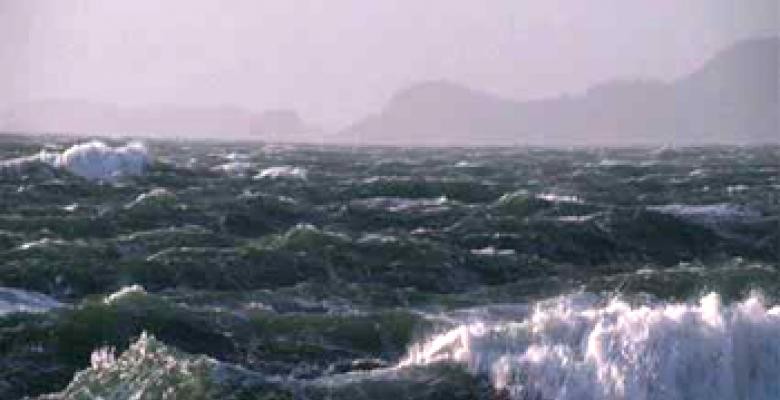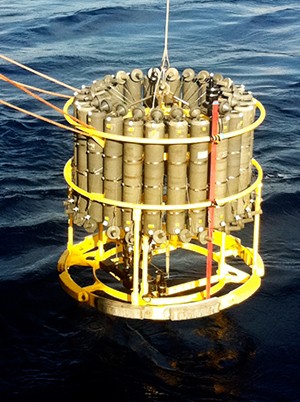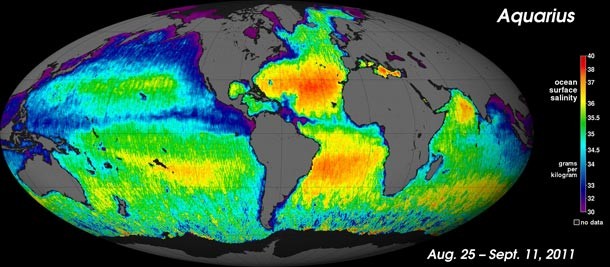New Salt Map of the Seas Gives Scientists a Taste of Discoveries Ahead


After less than a month in operation, a new NASA satellite has produced the first map showing how saltiness varies across the surface of the world’s oceans. Salt influences how seawater and heat move around the globe and also tells oceanographers how much rain and evaporation is happening at the surface. Until now, salt measurements came only from ships, moorings and buoys floating at sea; NASA says its Aquarius satellitewill capture in three years as much data as those earlier methods did in 125 years.
“When we get all the data online it’s going to be a quantum leap in our understanding of ocean processes,” said Arnold Gordon, an oceanographer at Columbia University’s Lamont-Doherty Earth Observatory who is involved in the project. “Salinity is like a marine rain gauge. It tells us where it rains and what the ocean circulation looks like.”
From space, orbiting satellites currently track sea surface temperatures, wind speed and direction, biological productivity, sea ice extent and sea surface height. Aquarius fills in the last major gap: salt. The saltiness of seawater plus its temperature, determines whether surface seawater sinks or floats, which in turn drives ocean circulation, bringing warmer waters and a milder climate to some parts of the globe and colder water and a harsher climate to others.
“Aquarius soon will allow scientists to explore the connections between global rainfall, ocean currents and climate variations,” said principal investigator Gary Lagerloef of Earth and Space Research, a non-profit institution in Seattle.
NASA produced the salinity map using Aquarius’s first month of data, checked against older, shipboard measurements. The map confirms what oceanographers already knew; the saltiest stretch of sea is in the subtropical North Atlantic Ocean, at the same latitude as Africa’s Sahara Desert. The seas are least salty along the equator and at the poles, where more water falls as rain or snow than returns to the air through evaporation
The global coverage of the map has also revealed some surprises, allowing scientists to pick out once-hidden features. In the subtropical North Atlantic, a complicated mix of salty surface waters has drawn the interest of Gordon and project colleague,Claudia Giulivi. They are also intrigued by a patch of low-salinity water in the western tropical Atlantic, at the outflow of the Amazon River. The northern edges of this area may reflect the lingering effects of Hurricane Irene, said Gordon.
As the satellite observations evolve, these newly-unveiled patterns will guide future fieldwork using traditional oceanographic methods and modeling. “Oceanographers are now challenged to explain what they see,” said Gordon. “Discoveries will be made.”
The satellite was launched in June from Vandenberg Air Force Base in California and became operational on Aug. 25. The project is funded by NASA and Argentina’s space agency, Comisión Nacional de Actividades Espaciales.
Media Inquiries:
Kevin Krajick
[email protected]
(212) 854-9729
